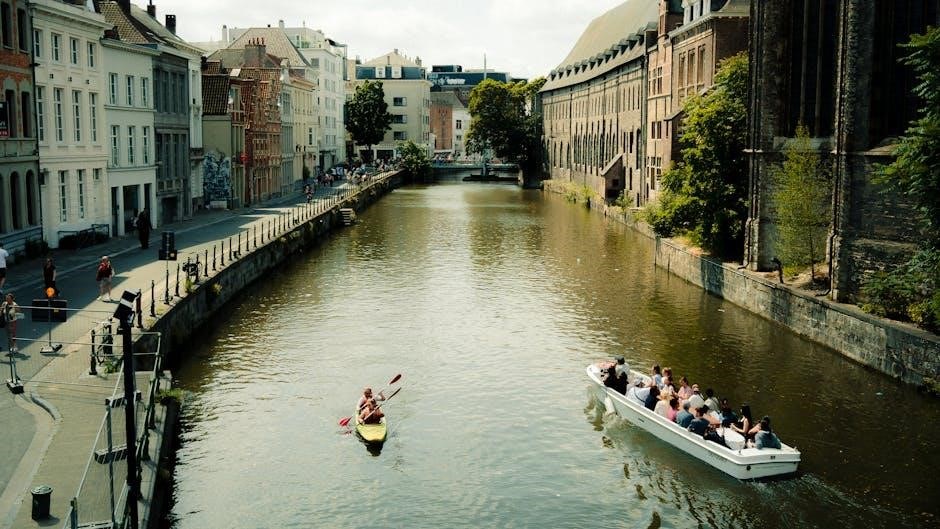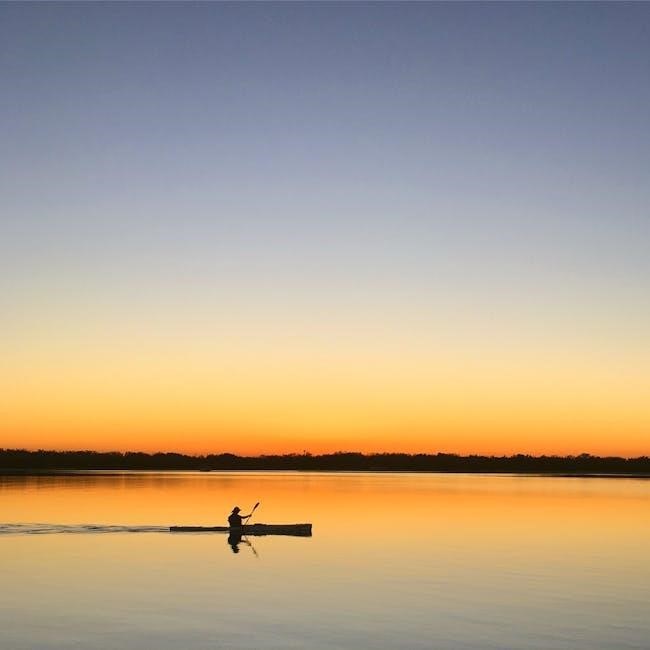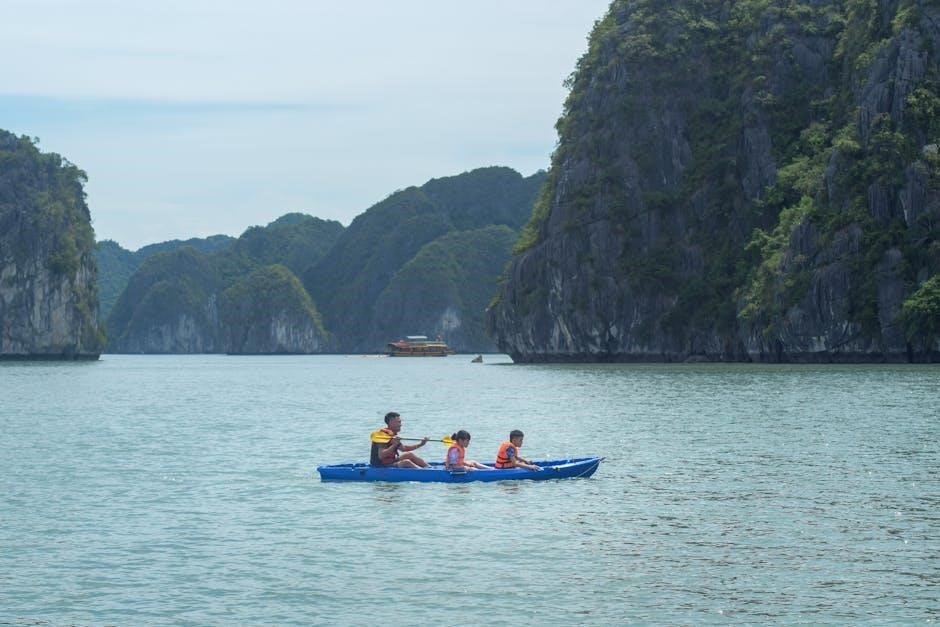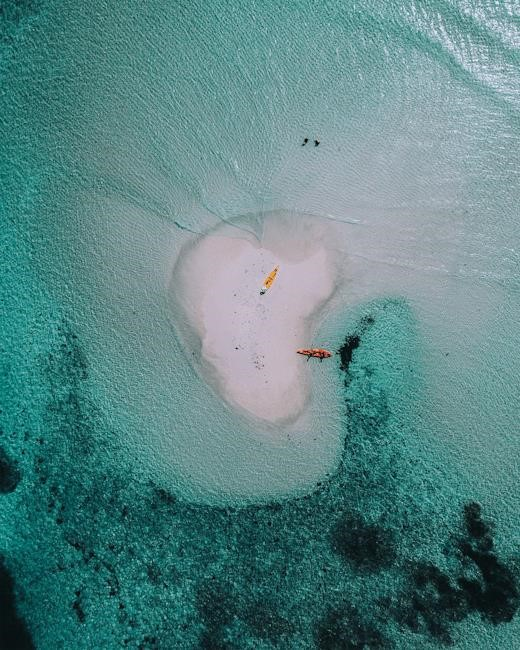Choosing the right kayak length is crucial for performance, stability, and comfort. This guide helps paddlers understand how kayak length impacts their experience on the water.
1.1 Importance of Kayak Length in Performance
Kayak length significantly impacts performance, affecting speed, tracking, and stability. Longer kayaks (12-14 feet) are faster and track straighter, ideal for touring or covering long distances. Shorter kayaks (8-12 feet) offer better maneuverability, making them suitable for recreational use or tight spaces. The length also influences stability, with longer kayaks generally providing more stability in calm waters, while shorter ones excel in dynamic conditions. Understanding how length affects performance helps paddlers choose the right kayak for their needs, ensuring an optimal experience on the water. Balancing these factors is key to enhancing both efficiency and enjoyment during kayaking adventures.
1.2 Overview of Kayak Length Ranges
Kayak lengths vary to cater to different paddling needs. Recreational kayaks typically range from 8 to 12 feet, offering a balance of stability and maneuverability for casual use. Touring kayaks, designed for longer trips, are usually 12 to 14 feet, providing greater speed and tracking efficiency. Inflatable kayaks, ranging from 8 to 13 feet, combine portability with decent performance. Fishing kayaks, often between 10 to 14 feet, emphasize stability and space for gear. Tandem kayaks, spanning 12 to 16 feet, accommodate two paddlers while maintaining performance. Understanding these ranges helps paddlers select the optimal length for their intended use, ensuring a more enjoyable and efficient kayaking experience.

Kayak Length by Use
Kayak length is determined by its intended use, with options for recreational, touring, inflatable, fishing, and tandem kayaks, each offering unique benefits for specific paddling needs.
2.1 Recreational Kayaks (8-12 feet)
Recreational kayaks, ranging from 8 to 12 feet, are ideal for casual paddling on calm waters like lakes or slow-moving rivers. Their shorter length provides excellent maneuverability, making them easy to handle for beginners. These kayaks are lightweight and portable, perfect for short trips or paddling in tight spaces. The shorter length also allows for easier storage and transportation. They are great for paddlers who prioritize ease of use and stability over speed. Additionally, they are often more affordable and require less maintenance, making them a popular choice for those new to kayaking or seeking a relaxing experience on the water. stability over speed.
2.2 Touring Kayaks (12-14 feet)
Touring kayaks, typically ranging from 12 to 14 feet, are designed for longer trips on open waters, offering a balance of speed and stability. Their longer length enhances tracking and reduces effort over distance, making them ideal for paddlers who plan to cover more ground. These kayaks often feature ample storage space for gear, making them suitable for multi-day adventures. While they are slightly heavier and less maneuverable than shorter kayaks, their efficiency in calm or choppy conditions makes them a great choice for experienced paddlers. The design prioritizes comfort and performance, ensuring a smooth paddling experience for those exploring larger bodies of water or embarking on extended journeys.
2.3 Inflatable Kayaks (8-13 feet)
Inflatable kayaks, ranging from 8 to 13 feet, are popular for their portability and ease of storage. Their lightweight design makes them ideal for paddlers who need a kayak that’s easy to transport and store. These kayaks are perfect for calm waters, such as lakes or slow-moving rivers, and are often used for recreational or fishing trips. While they may lack the speed of longer, rigid kayaks, their maneuverability and stability make them a great choice for beginners or those who prioritize convenience. Inflatable kayaks are also durable, with many models constructed from high-quality PVC or similar materials. They are an excellent option for paddlers who want a practical, space-saving kayak for short to medium-length trips.
2.4 Fishing Kayaks (10-14 feet)
Fishing kayaks, typically ranging from 10 to 14 feet, are designed for stability and functionality, making them ideal for anglers. These kayaks often feature wider hulls to improve balance, reducing the risk of tipping while casting or reeling in fish. Longer models (12-14 feet) offer better tracking and speed, allowing anglers to cover more water efficiently. Shorter models (10-12 feet) are more maneuverable, perfect for navigating tight spaces like rivers or inlets. Many fishing kayaks come with built-in rod holders, storage compartments, and mounting points for accessories like trolling motors or depth finders. Their durability and versatility make them a popular choice for both novice and experienced anglers seeking a reliable platform for their fishing adventures.
2.5 Tandem Kayaks (12-16 feet)
Tandem kayaks, designed for two paddlers, typically range from 12 to 16 feet in length. These kayaks are built for shared adventures, offering ample space for both paddlers and their gear. Longer tandem kayaks (14-16 feet) are ideal for touring and long-distance trips, providing excellent tracking and speed. Shorter models (12-14 feet) are more maneuverable, making them suitable for calm waters and casual outings. Tandem kayaks often feature adjustable seats and footrests to accommodate different paddlers, ensuring comfort for both. They are a great option for couples, families, or friends who enjoy paddling together, promoting teamwork and shared experiences on the water. Their length ensures stability, making them a versatile choice for various paddling environments.

Kayak Length by Paddler Considerations
Kayak length is influenced by paddler height, weight, experience, and paddling style. Longer kayaks suit taller, heavier paddlers, while shorter ones are better for smaller or less experienced paddlers.
3.1 Paddler Height and Weight
Paddler height and weight significantly influence kayak length selection. Taller paddlers often prefer longer kayaks for comfort and legroom, while shorter paddlers may find shorter kayaks easier to maneuver. Heavier paddlers benefit from longer, wider kayaks for stability and buoyancy, preventing the kayak from sitting too low in the water. Lighter paddlers can opt for shorter, narrower kayaks for better agility. Balancing these factors ensures optimal performance and comfort. Consider your body type and needs when choosing a kayak length to enhance your paddling experience.
3.2 Paddler Experience Level
Paddler experience level plays a key role in selecting the ideal kayak length. Beginners often benefit from shorter, wider kayaks, which offer greater stability and ease of control. As paddlers gain experience, they may prefer longer, narrower kayaks for improved speed and tracking. Experienced kayakers can handle longer lengths for touring or fishing, while shorter lengths suit those focused on maneuverability. Balancing experience with kayak length ensures a more enjoyable and efficient paddling experience. Always consider your skill level to choose a kayak that matches your abilities and goals. This ensures safety and maximizes performance on the water.
3.3 Paddling Style and Preferences
Paddling style and personal preferences significantly influence kayak length selection. For relaxed, casual paddling, shorter kayaks (8-10 feet) are ideal due to their lightweight design and ease of maneuverability. These are perfect for calm waters and recreational use. For those who prefer a more aggressive paddling style or longer trips, longer kayaks (12-14 feet) offer better speed and tracking, making them suitable for touring or exploring open waters. Additionally, paddlers who prioritize portability and storage may opt for shorter lengths, while those focused on performance and efficiency prefer longer kayaks. Understanding your paddling style helps tailor your kayak choice to your needs, ensuring a more enjoyable and personalized experience on the water.

Performance Aspects of Kayak Length
Kayak length impacts speed, tracking, and stability. Longer kayaks glide faster and straighter, while shorter ones offer better maneuverability. Balancing these factors ensures optimal performance for your paddling needs.
4.1 Speed and Tracking
Kayak length significantly affects speed and tracking. Longer kayaks, typically over 12 feet, are designed for efficiency, maintaining a straight course with less effort. Their streamlined hulls reduce drag, allowing paddlers to cover longer distances with greater speed. Conversely, shorter kayaks, while slower, offer improved maneuverability for navigating tight spaces. Tracking refers to how well a kayak stays on course without veering, which is enhanced in longer models due to their increased waterline length. For paddlers prioritizing speed and straight-line performance, longer kayaks are ideal. However, those needing agility in calm or tight waters may prefer shorter kayaks, sacrificing speed for ease of control.
4.2 Stability and Maneuverability
Kayak length plays a key role in determining stability and maneuverability. Shorter kayaks, typically under 12 feet, offer greater stability due to their wider hulls, making them ideal for calm waters or beginners. They are also more agile, allowing quick turns and easy handling in tight spaces. Longer kayaks, while less maneuverable, provide better tracking and are more stable in open or choppy waters. The trade-off lies in the paddler’s needs: shorter kayaks prioritize ease of handling, while longer ones emphasize efficiency and stability in challenging conditions. Balancing these factors ensures the right kayak choice for optimal performance and comfort on the water.
4.3 Portability and Storage
Kayak length significantly impacts portability and storage. Shorter kayaks, typically under 12 feet, are lighter and easier to transport, making them ideal for solo paddlers or those with limited storage space. They can be carried on smaller vehicles and stored in compact areas. Longer kayaks, while offering better performance on water, are heavier and require more space for storage. Inflatable kayaks provide a practical solution for storage, as they can be deflated and folded into smaller packages. Consider the available storage space and transportation options when choosing a kayak length, as these factors greatly influence overall convenience and accessibility. Balancing performance needs with practical storage solutions ensures a seamless kayaking experience.

Choosing the Right Kayak Length
Selecting the ideal kayak length involves balancing intended use, paddler size, experience, and practical considerations like storage and transport, ensuring a perfect fit for your needs.
5.1 Step-by-Step Guide to Selecting Kayak Length
Determine your primary use: recreational, touring, fishing, or tandem. Each has specific length ranges for optimal performance. For example, recreational kayaks are typically 8-12 feet, while touring kayaks are 12-14 feet. Fishing kayaks often range from 10-14 feet, offering stability for gear. Tandem kayaks, designed for two paddlers, are usually 12-16 feet long.
Consider your height and weight: Longer kayaks provide more legroom and support for taller or heavier paddlers. Shorter kayaks are better suited for smaller frames.
Think about your experience level: Beginners may prefer shorter, more maneuverable kayaks, while experienced paddlers might opt for longer, faster models.
Assess storage and transport needs: Shorter kayaks are easier to handle and store, especially for those with limited space.
By following these steps, you can find a kayak length that matches your lifestyle and paddling goals, ensuring a enjoyable and efficient experience on the water.
5.2 Considerations for Storage and Transport
When choosing a kayak, consider how and where you will store and transport it. Shorter kayaks (8-10 feet) are easier to handle and require less space, making them ideal for small vehicles or limited storage areas. Longer kayaks (12-14 feet) may need roof racks or trailers for transport. Durability also matters; lighter materials like fiberglass or inflatable designs simplify handling. Always clean and dry your kayak before storage to prevent damage. If storing outdoors, use a protective cover to shield it from the elements. Proper storage and transport practices ensure your kayak remains in good condition for years of enjoyable paddling experiences.

Maintenance and Handling
Regular cleaning, proper drying, and storage in a protective cover are essential. Always inspect for damage and use handling techniques that prevent hull stress to ensure longevity.
6.1 Handling Your Kayak On and Off Water
Proper handling techniques are essential to maintain your kayak’s condition and ensure safe transport. Always lift the kayak from the middle, using the handles, to avoid hull stress. For longer kayaks, consider enlisting help to prevent straining or damaging the boat. When moving on land, use a kayak cart or dolly to reduce friction and protect the hull. On water, enter and exit carefully to maintain balance, especially in shallow or rocky areas. Regularly inspect the kayak for scratches or dents and clean it thoroughly after use to prevent damage. Proper handling extends the kayak’s lifespan and ensures optimal performance during paddling adventures.
6.2 Storage Tips for Different Kayak Lengths
Proper storage is essential to maintain your kayak’s condition and longevity. For shorter kayaks (8-12 feet), indoor storage in a dry, cool place or hanging from sturdy racks is ideal. Longer kayaks (12-16 feet) may require outdoor storage with a waterproof cover to protect from UV damage and debris; Inflatable kayaks should be deflated and stored in a shaded area to prevent material degradation. Always clean the kayak before storage to avoid mold growth. Consider using a kayak cart or dolly for transport and storage. Regularly inspect the kayak for signs of wear and tear, and store it away from direct sunlight to preserve its color and integrity.

Common Mistakes in Kayak Length Selection
Common mistakes include prioritizing speed over stability, ignoring paddler weight and height, and overlooking the kayak’s intended use, leading to poor performance and discomfort.
7.1 Prioritizing Speed Over Stability
One common mistake is prioritizing speed over stability, which can lead to poor performance and discomfort. Many paddlers, especially beginners, opt for longer kayaks to maximize speed, but this often sacrifices stability, making the kayak more difficult to maneuver, especially in calm or choppy waters. Stability is crucial for confidence and control, particularly for those new to kayaking or paddling in challenging conditions. While speed is important for experienced paddlers or long-distance touring, it should not come at the expense of stability. A balanced approach, considering both factors, ensures a more enjoyable and efficient paddling experience. Always assess your skill level and paddling environment before making a decision.
7.2 Ignoring Paddler Weight and Height
Ignoring a paddler’s weight and height is a common mistake when selecting a kayak. Kayaks are designed to accommodate specific weight and height ranges, and neglecting these factors can lead to poor performance and discomfort. For example, a taller or heavier paddler may find a shorter kayak insufficient, as it can affect stability and maneuverability. Similarly, smaller paddlers in oversized kayaks may struggle with control. Always consider your body size and weight when choosing a kayak, as it directly impacts how the kayak will handle on the water. This ensures a safer, more enjoyable, and efficient paddling experience tailored to your needs. Proper fit is essential for optimal performance and comfort.
7.3 Overlooking Intended Use
Overlooking the intended use of a kayak is a common mistake that can lead to dissatisfaction. Different kayaks are designed for specific purposes, such as recreational paddling, touring, fishing, or racing. Using a kayak outside its intended use can result in poor performance and safety issues. For example, a short, wide recreational kayak may be stable but lacks the speed and tracking needed for long-distance touring. Similarly, a slender touring kayak might not provide the stability required for fishing. Always match the kayak’s design to your primary activity to ensure optimal performance, safety, and enjoyment on the water. This helps prevent unnecessary challenges and enhances your overall paddling experience.
Selecting the right kayak length is key to performance, comfort, and safety. Consider your experience, paddling style, and intended use to make an informed decision for optimal enjoyment;